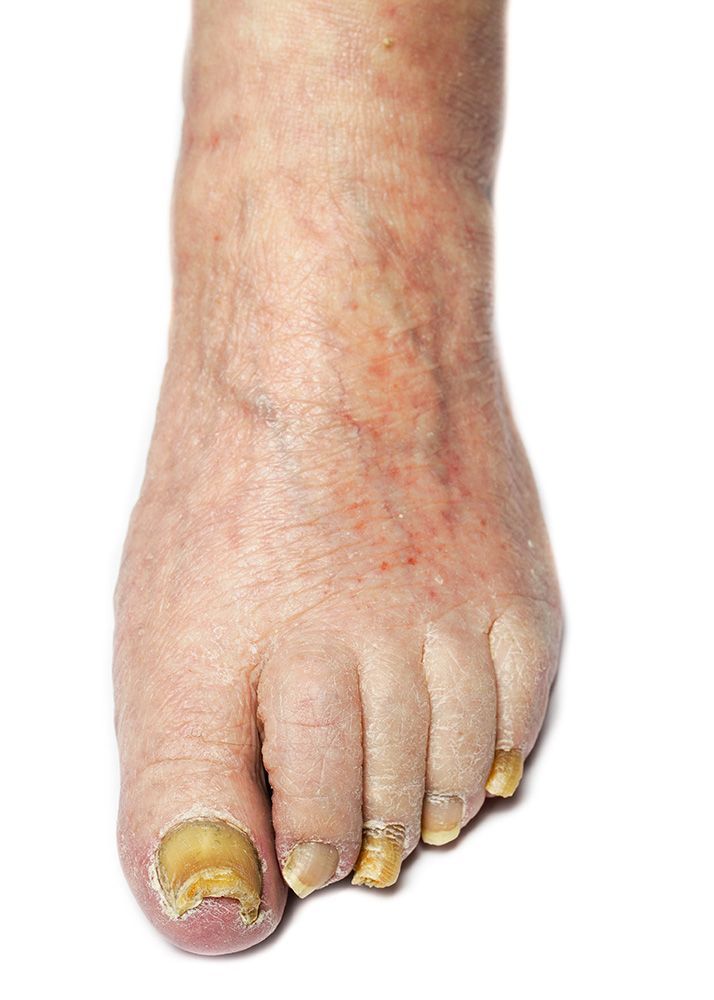Fungal Toenails

Comprehensive Nail Care
Diagnosis and Treatment for Fungal Toenail Infections
Toenail fungus is a common condition that develops when fungal organisms grow in the warm, damp environment of the feet. The infection often begins as a small spot under the nail and, if left untreated, can spread to other toenails or even the surrounding skin. This makes early diagnosis and professional care especially important for controlling the infection. Over time, fungal toenails can become thick, brittle, and discolored, making them difficult to trim or care for. While many people first notice the condition because of cosmetic changes, fungal toenails can also cause pain, pressure in shoes, and increased risk of secondary infections, particularly for patients with diabetes or circulation problems.
Causes of Fungal Toenails
Fungal infections occur when microscopic organisms enter through cracks in the toenail, small cuts in the skin, or separation between the nail and nail bed. Risk factors that increase the likelihood of developing fungal toenails include:
- A history of athlete’s foot
- Diabetes or circulation problems
- Advancing age
- A weakened immune system
- Smoking or other lifestyle factors
- Family history of fungal infections
Signs and Symptoms
Common signs of a fungal toenail infection include:
- Thickened or brittle toenails
- Discoloration, often yellow, brown, or white
- Nails that become misshapen or distorted
- Separation of the nail from the nail bed
- Odor or debris building up under the nail
Diagnosis and Treatment
A podiatrist can confirm toenail fungus through an exam and, if needed, lab testing. Treatment options may include:
- Topical antifungal creams, lacquers, or medicated nail treatments
- Oral antifungal medications for more advanced infections
- Debridement or thinning of thickened nails
- Laser therapy or other advanced treatment methods
- Preventive strategies to reduce recurrence
Prevention and Self-Care
You can lower your risk of fungal toenails by practicing good foot hygiene and protecting your feet in high-risk environments:
- Wash feet daily with soap and water, drying thoroughly between the toes
- Keep toenails trimmed straight across with sanitized clippers
- Wear breathable shoes and moisture-wicking socks
- Use footwear in public areas such as pools, gyms, and locker rooms
- Change shoes and socks regularly, especially after sweating
Start Your Journey to Wellness Today
Talk With Foot and Ankle Specialist Today!
If you notice changes in your toenails such as thickening, discoloration, or separation from the nail bed, schedule an appointment with our team. We’ll provide a proper diagnosis and a treatment plan to restore the health and appearance of your nails.

